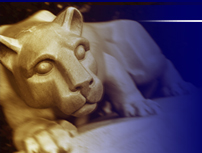Differences Between Catholic and Protestant Encounters
The Catholics, especially, were able to convert a number of Native Americans. Some elements of Catholicism were innately appealing to the Natives. Like the Indians’ own world-views, Catholics admired a large cast of characters: God the father, Jesus Christ, Mary, Joseph, and all of the Saints. Catholics also engaged in ceremonies and rituals, just like the Indians. These rituals also helped Catholics transcend language barriers and explain their beliefs. Catholics could bring images, pictures, crucifixes, medallions with etchings of Saints, and songs that vividly illustrated their faith. The Jesuits were also willing to travel to the Indians and live with them. They learned Native languages and strove to be part of Indian communities. Rhonda points out that Jesuits shared Indians’ belief in the supernatural, and they engaged them in serious dialogue, rather than simply preaching to them.
Puritans, who were much less interested in proselytizing, were also less successful. When they did try to expose Native Americans to Christianity, Puritans generally aimed to incorporate the Indians into their own tightly ordered communities, rather than embarking on missions into the native cultures. Without the Catholics’ store of songs, stories and images, the Puritans were left with some rather cold ideas about pre-destination to explain to the Indians. It was harder for them to make their religion sound appealing to a group of people who had completely different cultural backgrounds.
One thing is certain, Native American cultures were severely challenged by the intrusion of Europeans. The Christians too, found themselves reconfiguring their own beliefs in their efforts to both transport aspects of their European culture to the New World and establish new and different communities in America.
In the film, Black Robe, a Jesuit priest is sent on a dangerous mission deep into the Canadian wilderness. The year is 1634 and the Jesuit, Father Laforgue, must trek over 1,500 miles through unsettled wilderness to reach a mission in Huron Indian territory. He is profoundly committed to his goal of converting the Indians to Catholicism. Laforge is accompanied by Algonkian Indians who serve as his guides. The movie vividly illustrates the religious intensity of both the Jesuits and the Algonkians, and demonstrates how they spiritual beliefs shape the way that they view nature and each other.
